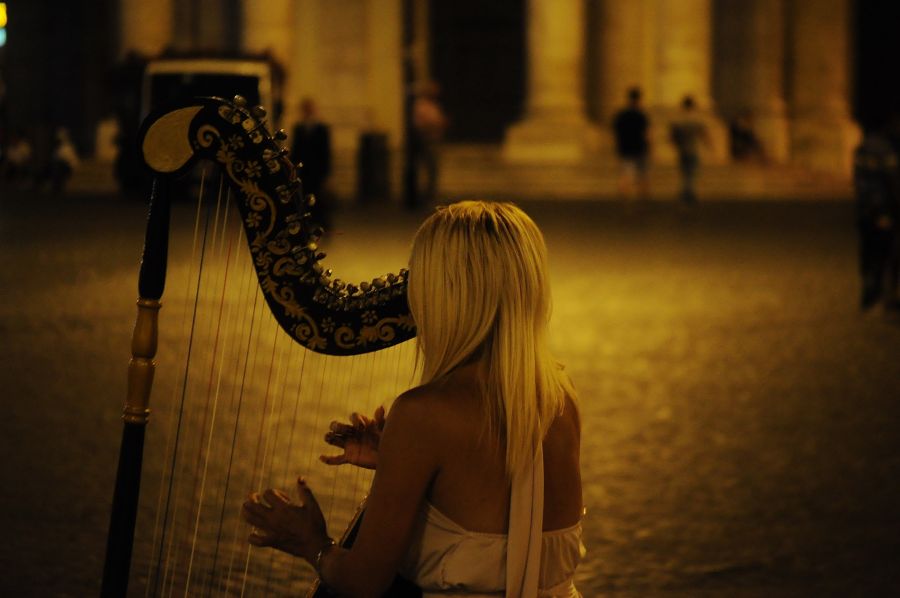If you are in the sweet period where learning a new instrument feels magical, we welcome you to this post. Any new or old musician has a special connection with their instrument that they buy for the first time. If a harp is a musical instrument of your choice, this guide will help you make a fair first-time decision. While it is exciting to walk into a store and pick any shiny harp that greets you eye, the various aspects of these instruments can be overwhelming. What are the different types of harps? Do all harps have the same number of strings? The questions in your mind will feel endless.
Let us tell you about a few important things you must consider when looking for your first harp.
Things to consider when buying a Harp
Do you know that harp makers always hear comments like: I always wanted to play one of these!
Thinking of harps, we always imagine the huge instruments we saw in Disney movies. It is difficult to imagine yourself with an instrument twice your size.
Lever vs Pedal Harp
The two sizes of harps will help you break into the play field and learn the basics of playing. Size difference between a lever and a pedal harp is like a car and a bicycle. Lever harps can only play with a small number of keys. You can also call it a simple beginner’s harp.
Pedal harps on the other hands are fully chromatic and are able to play any keys unlike lever harps. You move the pedals of the harp with your feet while playing. There are 7 pedals in a lever harp that change every musical note simultaneously.
How many strings do I need?
As you physically inspect the harps you will get boggled by the variety in springs. The number of strings depends on the maker and the model. In simple words, the bigger the harp the more strings it will have. Generally, the average number of strings in a harp is 34. It is also an accepted number of strings for any exam board. Beginners or people looking for a gifting option can use a 34-string harp to go from beginner to advance level.
Then there are harps with 36 strings which are also fairly common. These harps belong to professionals who want to produce a larger sound with different string tension. This harp is not suggested for beginners. Beginners can also invest in a 26-strings harp which is as affordable and portable as it can get. If you do not have much space or want to play as a hobby, you can get the 26-string harp.
Sound of harps
If you are serious about learning harps, this question is very important. How a harp sounds will make all the difference in leaving your personal mark on your listeners. Even after all the advice you read on the internet, choosing a harp is a personal decision. If you like the sound of the harp, only then you will proceed to buy it. As if by magic, harps respond differently to different players. No one is right or wrong in the decision of buying a harp, not even your teacher! For example, your teacher might prefer a harp with more tension, but you can choose to buy harp with less tense springs.
Craftsmanship
Investing in a harp takes both time and money for beginners and enthusiasts. You want to invest in an instrument that does not give away in a few uses or becomes a pain in carrying around. In recent years, there is abundance of cheaply made harps in the market. These cheap options look very attractive, but do not stay with you for a long time. In the harp business, you need to stay with a maker who has been at this craft for a long time. For some, harp-making is a family business passed over generations.
When assessing a harp, look for the following features:
- Are there any twists in its neck or columns?
- Is the wood cracked from anywhere?
- Is the soundboard in good condition?
- Are the semitone layers looking good? Poor semitone layers displace the strings and affect sound quality
Is It Possible to Make Your Own Harp?
You could do a personal project with your kids where you make a harp out of household objects. The goal should be to stay as frugal as possible. Of course, you won’t get to put it to as much use as a professionally manufactured harp, but you’d have some fun with the young ones while teaching them about the instrument. Below is a video showcasing how to make a DIY harp.
Remember, if you’re serious about learning the harp, it’s best to go for a professional purchase.
Conclusion
There’s no shortage of harps in existence, so whatever unit you get comes down to your preference. As a general rule, price is going to define the quality of the sound. Less expensive harps play a more rounded sound, and their levers can be hard to maneuver. In contrast, the quality ones will provide a better return on the investment

